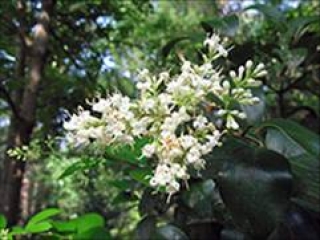Posted 02/1/10
To what extent are plant invasions related to urban sprawl? Using cutting edge remote sensing techniques, Gregorio Gavier Pizarro documented the rapid expansion of Glossy privet, an invasive tree, over 23 years in central Argentina. He found that the species, originally introduced into human settlements as a landscaping plant, has spread rapidly into nearby forest areas, where it out-competed the native vegetation. The spatial patterns of invasion were related to urban sprawl and its associated human activities.

Even seemingly harmless human activities may have huge impacts on the natural environment. Glossy privet, an ornamental tree that is often used for landscaping purposes, was introduced in the mid-twentieth century into settlements in the Cordoba province of central Argentina. The tree, which has lovely flowers, turned to be a highly efficient invader, which spread rapidly from its original urban parks into nearby forests, out-competing the native vegetation, and forming continuous, dense stands where no other species can grow. Decades later, Gregorio Gavier Pizarro set out to document the extent of the invasion, and to prove that the process depends mainly on human activities. His research approach consisted of two steps. First, he had to quantify the extent of the invasion, in order to better understand its spatial and temporal dynamics. Second, he had to test whether the spatial pattern of the invasion was related to urban sprawl, and to its related human activities.Rather than using a fixed time point to determine the current state of the invasion, as it is often done in similar studies, Gregorio attempted to map and follow a decadal time span of the invasion. Towards that, he obtained six LANDSAT scenes of the study area (1983, 1987, 1992, 1997, 2001, and 2006). Instead of mapping each scene separately, he merged them into a multi-temporal scene which he classified using Support Vector Machines, a highly sophisticated image classification technique. Each class represented a specific invasion period (e.g. ‘expansion 1983-1987’), which resulted in a map that portrays the entire invasion process through time. Field data which included tree coring confirmed the accuracy of his work.Gregorio found out that the rate of the species expansion was very fast, even comparable to the most effective invasive plant species known today. Starting from just 50 hectares in 1983, with most of them located in small stands located inside urban areas, Glossy privet now covers 2500 hectares, which are 20% of the forests in the study area. Invasion rates were slow in the 1980’s (36.2 ha per year), but increased rapidly in later study period (152 ha per year). The expansion was not homogeneous in space and time. Early expansions occurred along a river valley and on forested slopes near the source populations. Later expansions occurred in other parts of the study area, as well as near the initial invaded forest stands.To assess how invasion patterns are related to human settlements, Gregorio applied two techniques from distinct fields. The first, analysis of preference, is widely used in wildlife management, and tests whether the proportion of Glossy privet stands in certain buffer distances around urban areas is higher than its proportion in the entire study area. The second, neutral model simulations, is used in landscape ecology, and tests whether a certain factor structures the landscape. The methods is based on generation of many artificial (neutral) landscapes, which in this case yields an empirical distribution of the spatial association between Glossy privet and urban areas (i.e. how many times Glossy privet pixels appear adjacent to urban pixels) that is compared to the spatial association value obtained from the real landscape.Both techniques revealed a clear and significat relation between urban areas and Glossy privet occurrence and expansion. The distribution of Glossy privet proportions varied with buffer distances, and between years. In 1983, a large proportion of Glossy privet (82%) was within 600 m of urban areas, whereas in 2006, this proportion dropped to 52%, but a substantial proportion of the species was found more than 600 m beyond the urban boundaries. Between 2001 and 2006, Glossy privet tended to expand further outwards of the urban areas.Urban areas are a key factor in the distribution of Glossy privet, and Gregorio suggests that they facilitate the invasion in two ways: being a source of propagules for invading adjacent areas, and proving disturbed areas that are more easily invaded. Here, the original seed sources were located inside urban areas, which served as the starting points of the invasion. The invasion process was further facilitated by several other human activities, such as forest clearing and soil disturbance which are known to support invasions by supplying competitive advantage to invaders over the native species. Since Glossy privet is mainly dispersed by birds, the rapid spread of this species in the region is a result of the complex interactions between human activities, landscape pattern, and species behavior and distribution. These finding have important management implications, since urban growth is the study area is rampant and expected to continue, in addition to ongoing logging and other disturbances. Conservation efforts should therefore attempt to prevent urban development near forests of high conservation value. Regulations and environmental education can be used to limit the use of Glossy privet as an ornamental plant, especially in areas of new urban development.”
Story by Eric Wood
